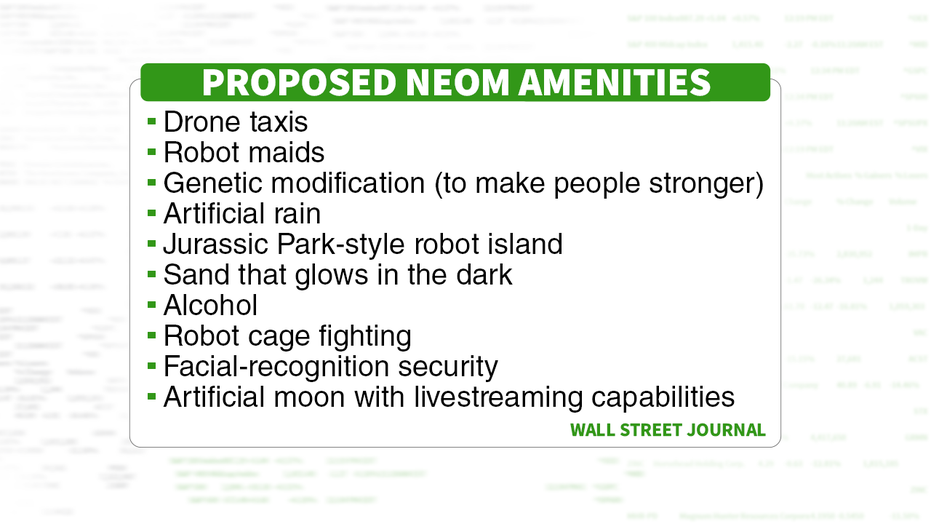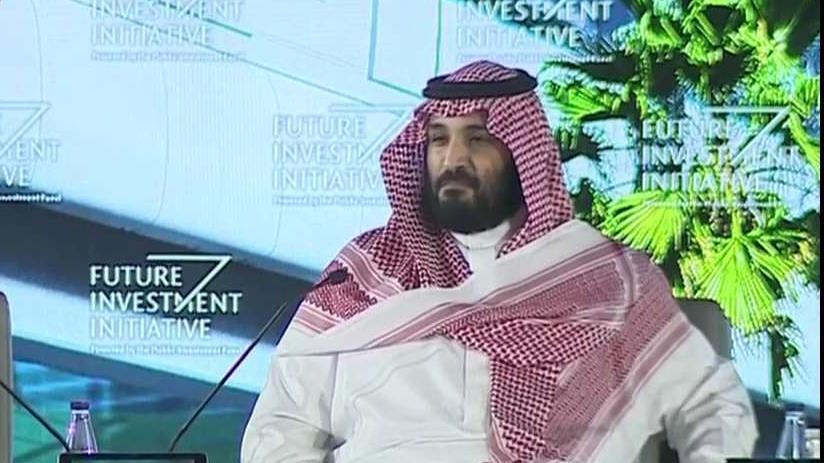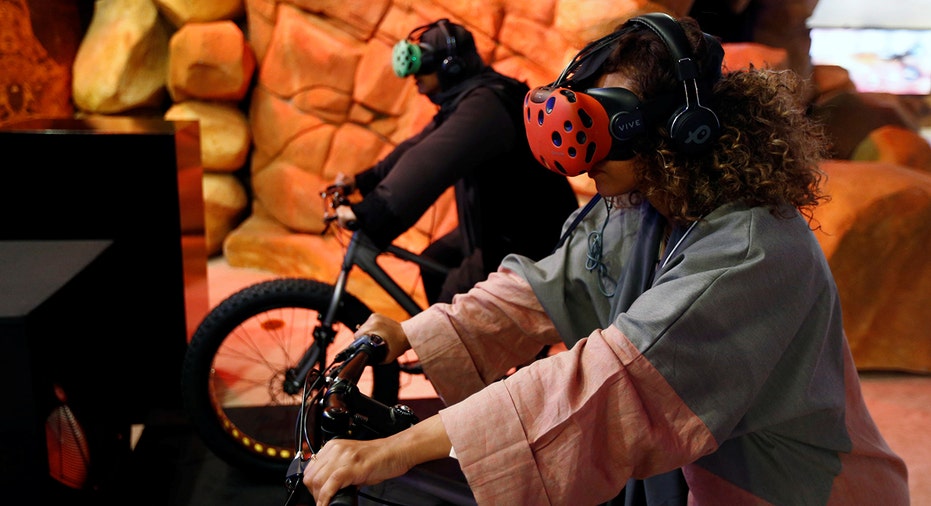Saudi Arabia Crown Prince’s $500B city aims for futuristic ‘Jetsons’-like amenities
It’s a $500 billion project that has plans for amenities you’d see out of a ‘Jetsons’ episode.
According to documents reviewed by the Wall Street Journal, Saudi Crown Prince Mohammed bin Salman’s dream will include offerings from glow-in-the-dark sand to an artificial moon with livestreaming capabilities.
The Northwest corner of Saudi Arabia is promoted as Neom: “the blank page you need to write humanity’s next chapter.”
On the list of things you can use: drone taxis, robot maids, genetic modification, artificial rain, a Jurassic Park-style robot island, sand that glows in the dark, robot cage fighting, security that utilizes facial-recognition technology, a fake moon and alcohol – which is banned in the country.
Visitors watch a 3D presentation during an exhibition on 'Neom', a new business and industrial city, in Riyadh, Saudi Arabia, October 25, 2017. REUTERS/Faisal Al Nasser
The city’s promotional video touts the space as ancient hills where you could see nothing, “or you can see nothing to hold you back.”
“Here, you’re beginning from scratch,” FOX Business’ Maria Bartiromo asked MBS in during a 2017 conference in Riyadh, Saudi Arabia.
“What do you need most to make this a reality?”
“Starting from scratch is a unique thing. And this is what we concentrate on today, to plan a city with the technologies of tomorrow… Today there is no existing city that can use drones because they lack the infrastructure like parking,” he explained.
Aerial photo of Neom (Facebook: Discover Neom)
The Prince told Bartiromo transportation plans at the time - like whether or not the city would have cars, driverless cars, or no cars at all – had yet to be made.
“There are many things we cannot start unless we start from scratch.”
Billed as “the start up the size of a country,” some companies that the project hopes to get on board include Amazon and Tesla, according to the WSJ.
The Saudi government has not responded to a request from the Wall Street Journal for comment on the plans.
“Nobody will be able to build something like Neom except to demolish an existing city and rebuild it. But no other city in the world can change to become a Neom,” MBS explained to Bartiromo.

Some 20,000 people living in the area are reportedly being forced to relocate by 2022.

























